Nestled in the heart of Provence, Ansouis is a hidden gem that exudes timeless charm and beauty.
This enchanting village, renowned for its historic architecture and serene atmosphere, offers a perfect escape into the picturesque landscapes of the Luberon region.
Wander through its narrow streets, discover hidden squares, and soak in the stunning views that make Ansouis one of France's most beautiful villages.
Watch this short video on the Luberon!
Why you should visit Ansouis
Ansouis is an enchanting village that promises a journey through time and beauty.
With its charming, narrow streets, historic stone houses, and the magnificent castle perched atop the hill, Ansouis offers a quintessential Provençal experience.
The houses in the village, built in a semicircle on the southern slope of a rocky escarpment, huddle close together to better shelter from the mistral wind.
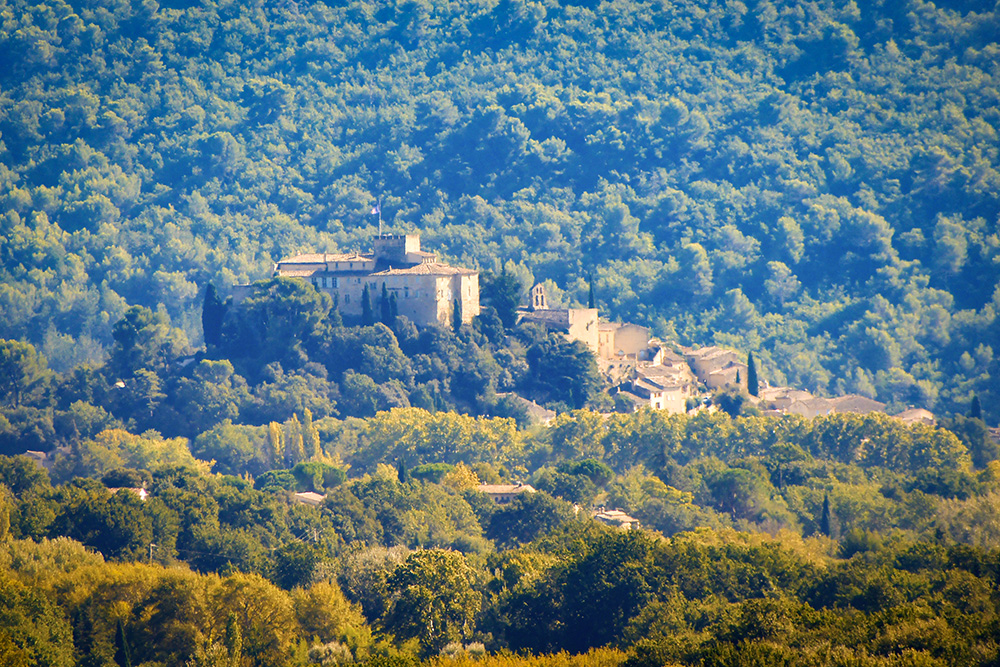
The village and castle of Ansouis from Cucuron © French Moments
Visitors can wander through picturesque passages, discover hidden squares, and admire the stunning views over the Luberon region.
The village’s rich history is evident at every turn, from the ancient church of Saint-Martin to the beautifully preserved medieval architecture.
As one of France’s most beautiful villages, Ansouis captivates with its serene atmosphere and timeless allure, making it a must-visit destination for those seeking both tranquillity and a touch of history.
Plan your trip
- 🛏 Find the best accommodations in the Luberon on Booking.com
- 🚙 Rent a car in Aix-en-Provence or Marseille-Provence Airport
- 🙋♀️ Get the PASS CÔTE D'AZUR and take your pick from more than 100 amazing experiences!
- 🤩 Visit the beautiful Provençal region of Luberon
- 🚐 Join a 6-hour tour of Lourmarin, Bonnieux, Roussillon, and Gordes by air-conditioned minibus
- 🚘 Discover Provence in a 2CV. Stroll along exceptional roads and enjoy a piece of Luberon all to yourself!
- 🥗 Experience a black truffle hunting tour in a Luberon plantation
- 📚 Read the DK Eyewitness Provence and the Côte d’Azur Travel Guide
- 🗺 Download the touristic map of Ansouis
- 🚻 Public toilets are located near the Place Saint Elzéar.
- 🚗 Park at the entrance to the old medieval centre: large car park at the bottom of Boulevard des Platanes.
Ansouis: A Bit of History
The first traces of human occupation of the site date back to ancient times.
Greek coins also attest that Ansouis was later populated by Ligurians, who traded with the Greek population of Marseille.
The village is mentioned for the first time in 963, when Lambert de Reillanne donated the lands of “d’Ansoye” to the Abbey of Saint-Pierre de Montmajour, near Arles.
In fact, Ansouis was located on the road between Aix-en-Provence and Apt.
This ideal observation post for controlling the road justified its fortification in the Middle Ages.
The first protective enclosure of the village was built in an amphitheatre shape during the 12th and 13th centuries.
At the top of the hill, the castle had a central keep and was flanked by four towers.
It bore no resemblance to the Renaissance appearance it has today.

Ansouis © French Moments
Agriculture and Tourism
Nowadays, the two main economic drivers of the village are the vineyards and tourism.
Agriculture plays an important role in the village's economy, with fields of lavender and orchards of olive, cherry, and almond trees.
In addition, the vineyards produce AOC Côtes du Luberon wines.
In terms of tourism, Ansouis is located south of the Luberon massif and its tourist sites, such as the perched villages.
Ansouis is part of the Plus Beaux Villages de France, a French association and certification brand created in 1982 that connects a network of more than 176 villages.
Other neighbouring villages in the network are Lourmarin, Gordes and Ménerbes.

Ansouis © French Moments
Ansouis Trivia: A Movie Setting
It was in Ansouis that some scenes from Claude Berri's films “Jean de Florette” and “Manon des Sources” were filmed.
These two films from 1986 are adaptations of the eponymous books by Marcel Pagnol.
They were very successful both in France and in English-speaking countries.
The scenes filmed in Ansouis include the preaching, the Christmas mass, and Manon's wedding.
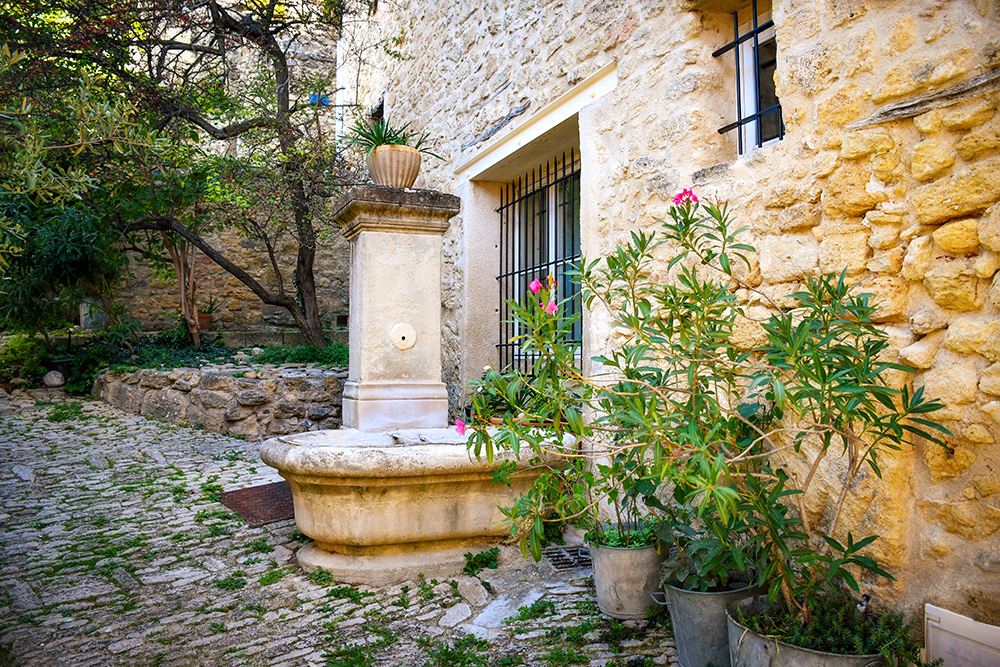
Ansouis © French Moments
Discover Ansouis
Here's some tourist information to help you explore the Provencal village.
🎦 Check out my guided walk on YouTube to explore Ansouis with me:
Let's start our discovery walk through Ansouis from the visitors' car park, situated at the foot of the village.
We will climb through the maze of old streets to the top, where the church and the castle are located.
Boulevard des Platanes
As we ascend these steps, we will find ourselves on the Boulevard des Platanes, which we will follow up to the town hall.
On the right is the town hall of Ansouis.
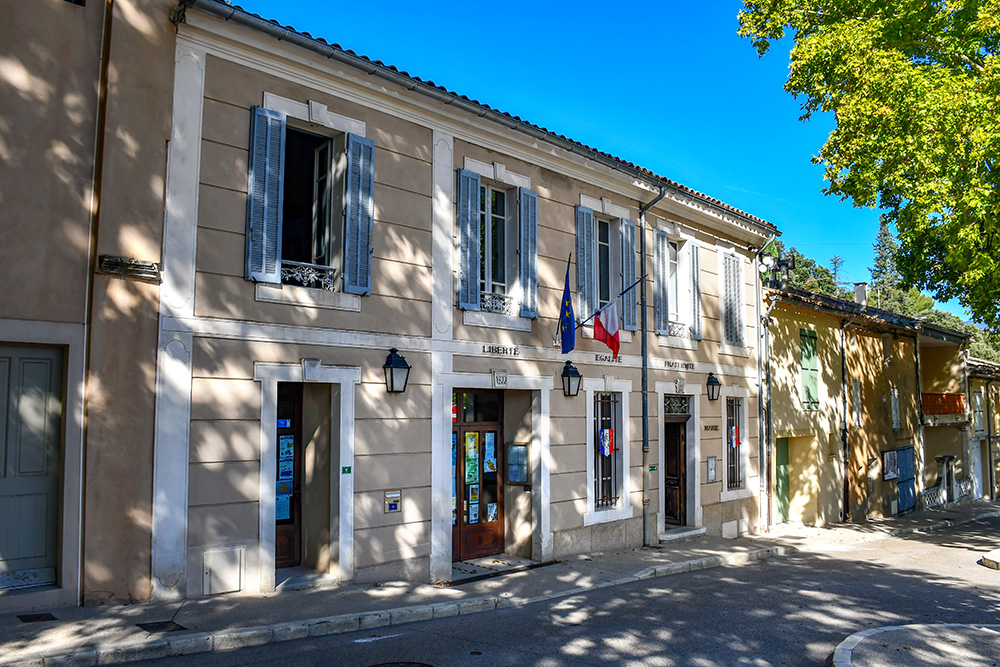
Ansouis Town Hall © French Moments
Place des Hôtes and Rue Basse
Enter the Place des Hôtes.
This small square, typical of Luberon villages, hosts a café, the tobacconist, and other shops.
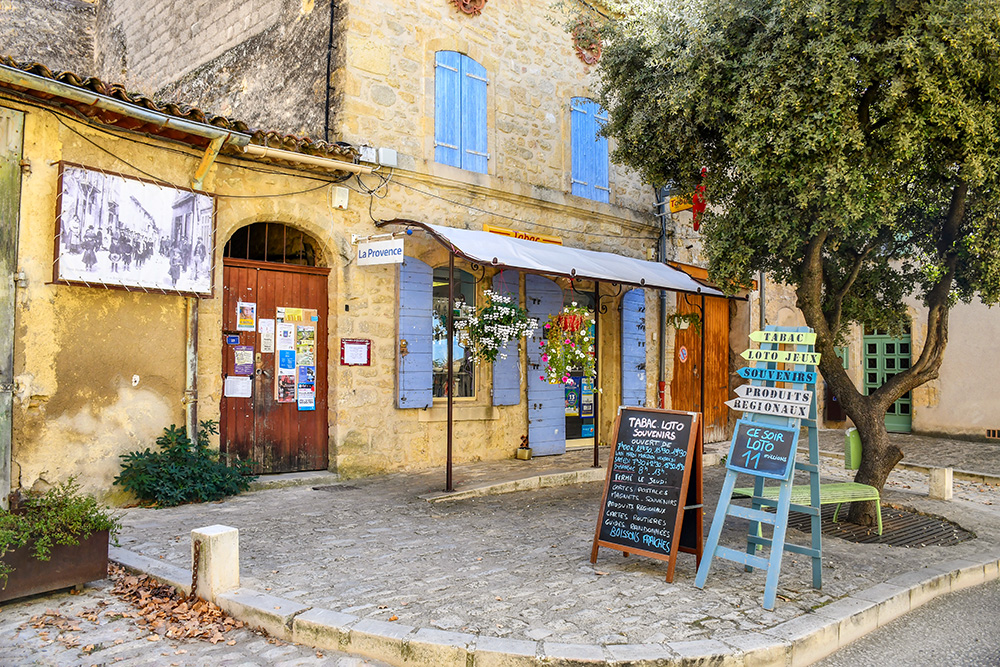
Place des Hôtes © French Moments
Let's continue along the Rue du Vieux-Moulin.
And take a right onto the Rue Basse.
The streets run parallel to the slope.
Very narrow passages connect them, like the Traverse Esquicho-Couido, the Traverse du Musée and the Traverse du Vieux Platane, which, as its name suggests, leads to an old plane tree.
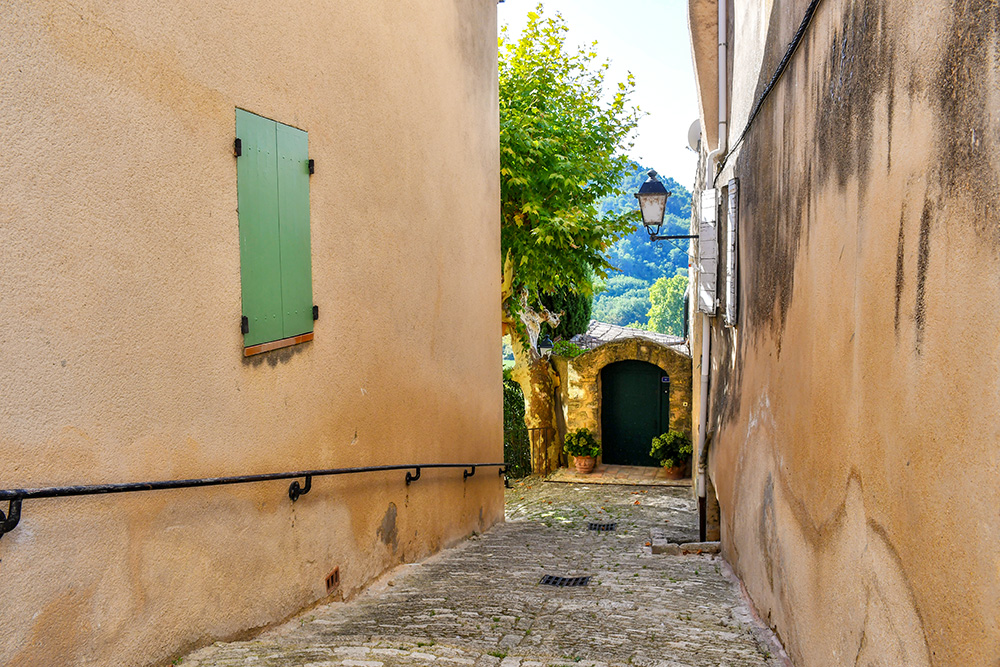
Traverse du Vieux Platane © French Moments
When reaching the end of the Rue Basse, you find yourself at the intersection with the Rue de France. Climb to the right.
In front of us stand the ramparts.
This stepped ramp allows us to reach the top of the village.
Grand Portail and Rue Grande
We are at the site of the Grand Portail.
This old entrance to the village no longer exists, and the wrought iron cross we just saw commemorates its existence.
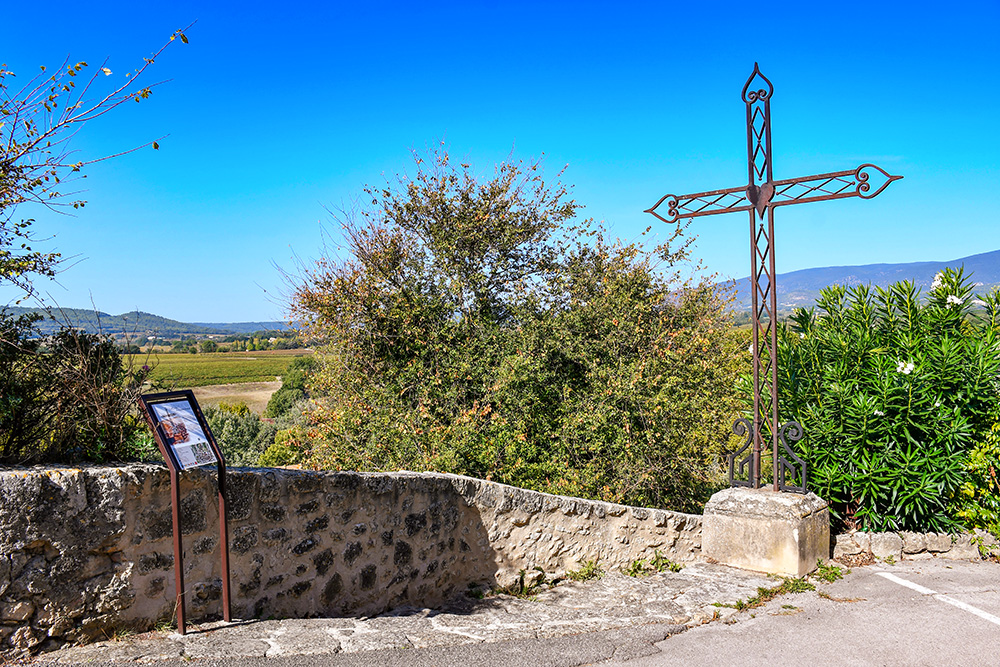
Grand Portail © French Moments
Let's now walk along the Rue Grande.
This lovely old street is lined with beautiful stone houses.
The Rue Grande provides access to charming little alleys, like this cul-de-sac: the Impasse de l’Aubarestié.
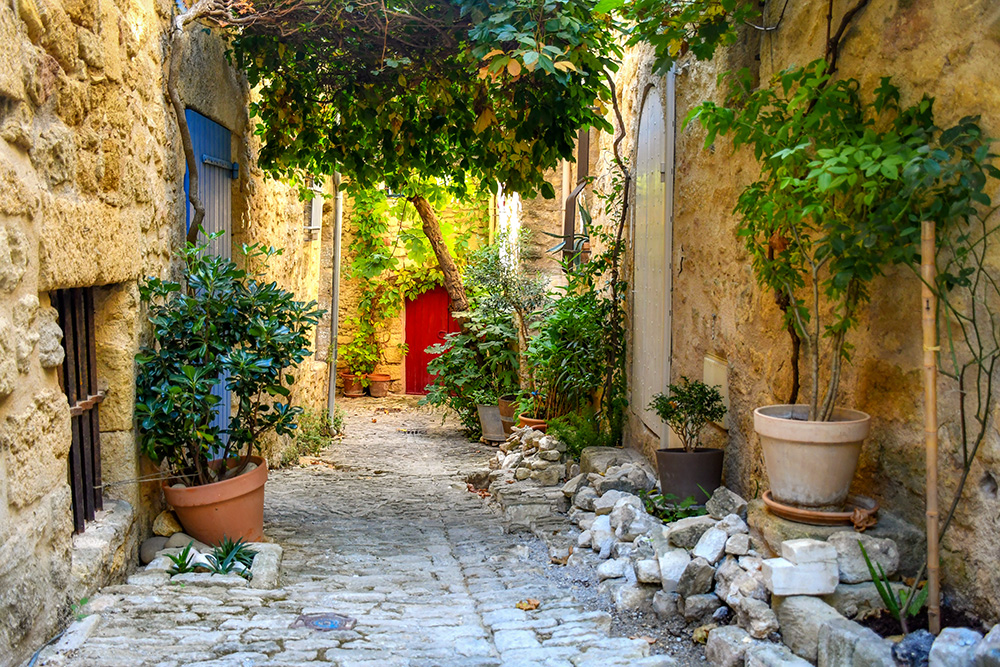
Impasse de l’Aubarestié © French Moments
Place du Château and Maison des Consuls
The Place du Château is a lovely square with a typical Provençal touch.
The large building at the corner of Rue Grande and the square is the Maison des Consuls.
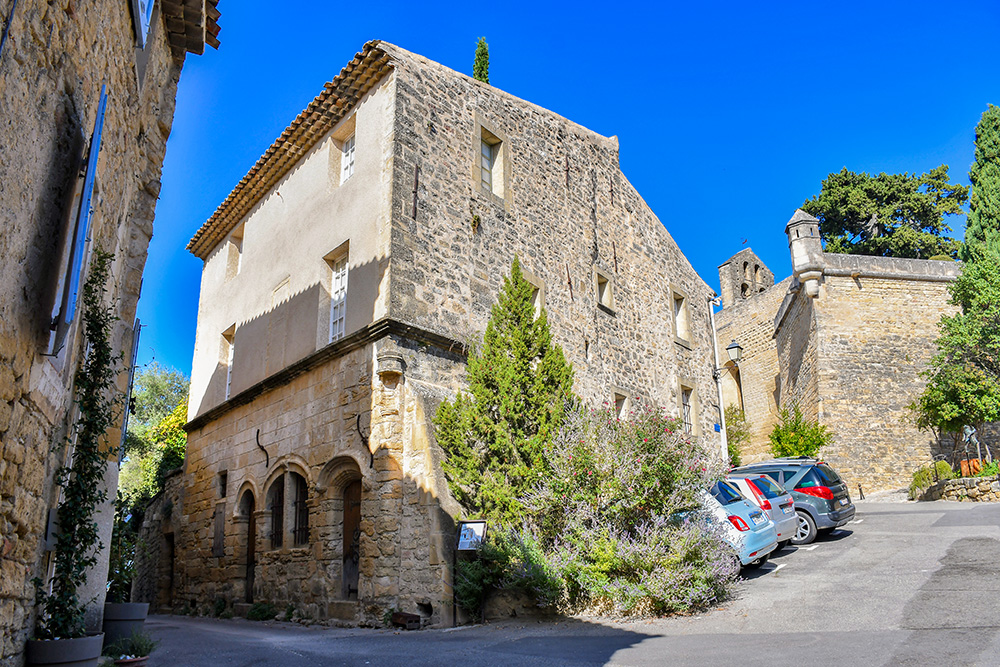
Maison des Consuls © French Moments
This was where the city council met in the 15th and 16th centuries.
The consuls were usually wealthy bourgeois, appointed by the lord, tasked with administering the community.

Maison des Consuls © French Moments
The ground floor housed grain silos, an oven, and stalls for meat and fish.
These were intended to supply the villagers who sought refuge within the castle walls during a siege.
Find your way to the Place de l'église. We enter one of the most picturesque parts of the village.
The watchtower above us was only built in the 19th century.
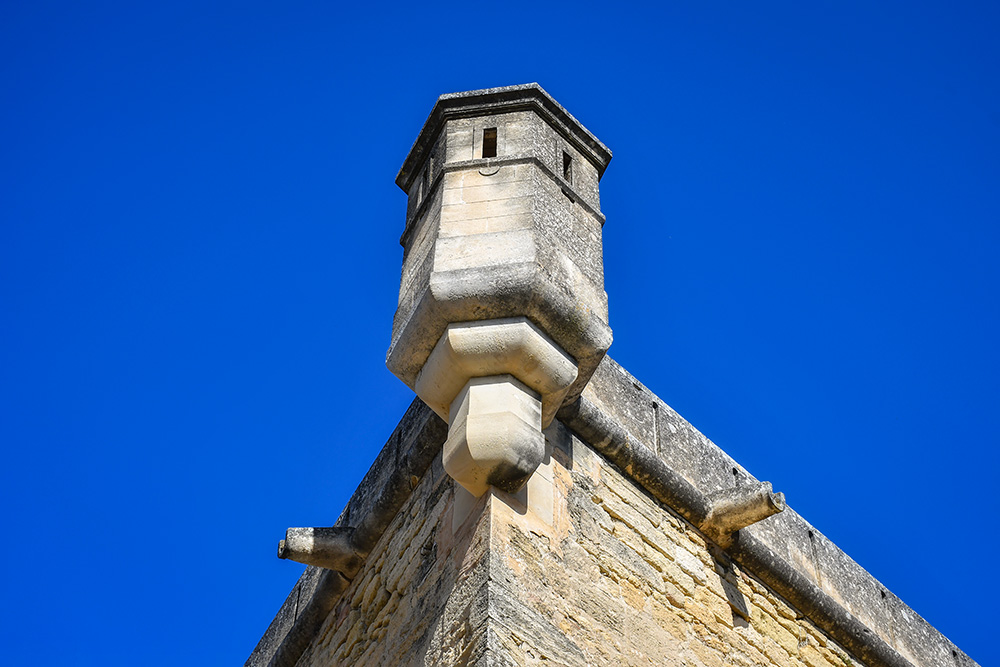
Watch tower (19th century) © French Moments
Saint-Martin Church and the Viewpoint
The square of Place de l'église is bordered by an 18th-century building (the former presbytery) and the austere stone facade of the Saint-Martin church.
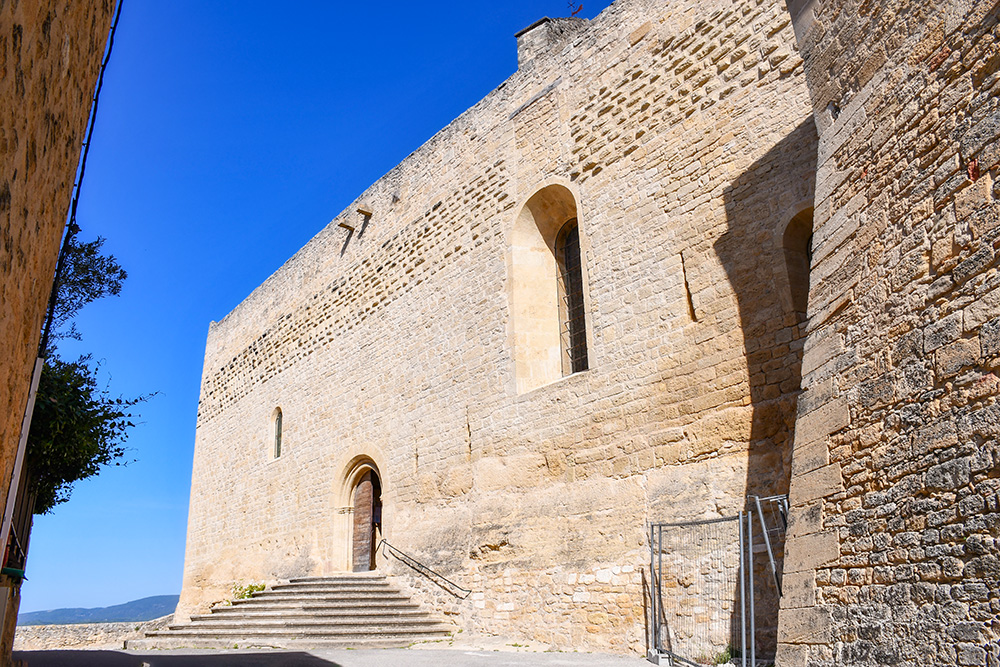
The austere façade of the church © French Moments
The church is attached to the castle’s curtain wall and likely dates back to the late 13th century.
The parish of Ansouis appears in texts around the end of the 11th century as a dependency of the cathedral chapter of Aix-en-Provence.
Inside, the church consists of a nave with three bays and a transverse vessel vaulted with a broken barrel vault.
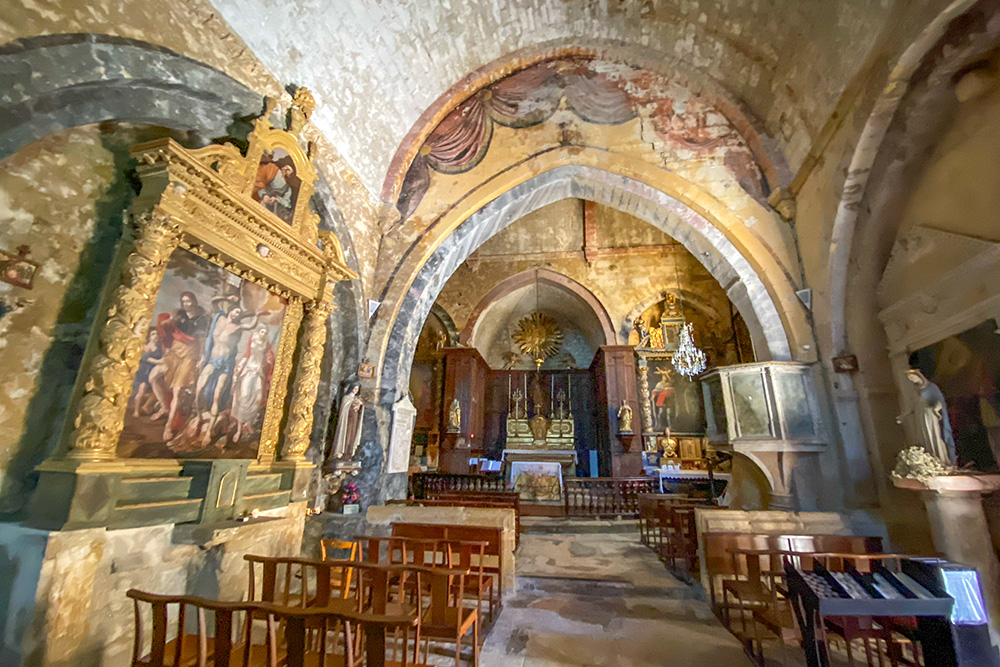
The nave of the church © French Moments
The vessel is complemented by a square-plan apse flanked by two small apses.
The altarpiece and paintings date back to the 17th century.

The altar © French Moments
On the right, we can access the Balcony, a panoramic terrace overlooking the surrounding region, from Lourmarin to Cucuron, and ahead of us, the opening towards the Durance on the Villelaure side.
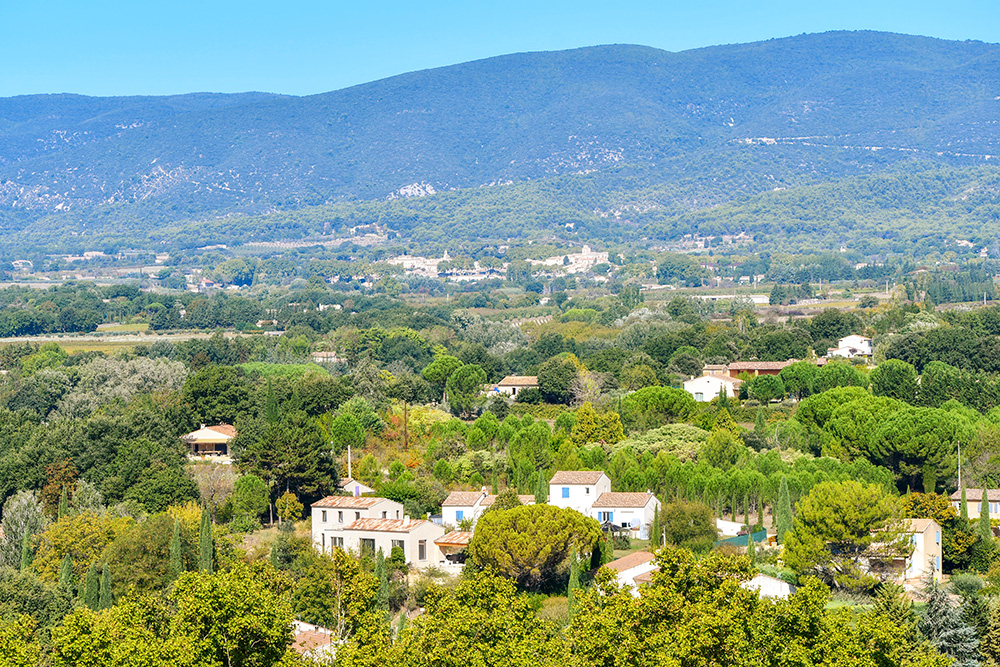
The view from the balcony © French Moments
Let's retrace our steps and head towards the castle.

Ansouis © French Moments
The Castle of Ansouis
The castle of Ansouis is an iconic site of Provençal heritage.

The castle entrance © French Moments
It was originally a military fortress belonging to the powerful family of the Counts of Forcalquier.
Their lordship over Ansouis lasted until 1178 when this domain became part of the Sabran family’s estate.

The castle atop the hill © French Moments
Then, at the beginning of the 17th century, it passed into the hands of the Escalis family.
This noble family from Aix-en-Provence expanded and transformed the castle into a pleasure residence.
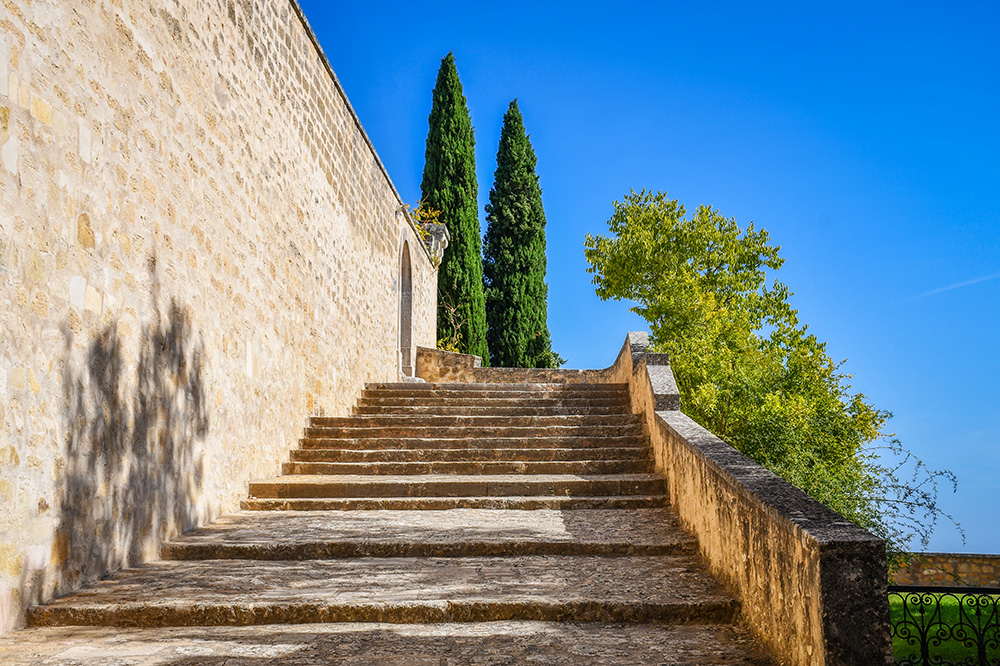
The grand staircase © French Moments
It is possible to visit the castle during guided tours in the afternoons from April to the end of October.
Rue du Cartel and Rue des Remparts
Let's now follow the Rue du Cartel and descend via the Rue des Remparts.
The later street offers some fine views of the former ramparts, the castle and the picturesque Rue du Petit Portail below.

Rue des Remparts © French Moments
Take the Rue du Grand Four and pass through a very quaint part of Ansouis.
The Belfry of Ansouis
This arcade leads us to the foot of the belfry.
It is in a house here that the Ansouis city council held its meetings from 1540 onwards.
This house later became the town hall of Ansouis.
Towards the end of the 16th century or the beginning of the 17th century, a belfry was built on top, crowned with a wrought iron campanile.
The clock itself was only installed in 1909.
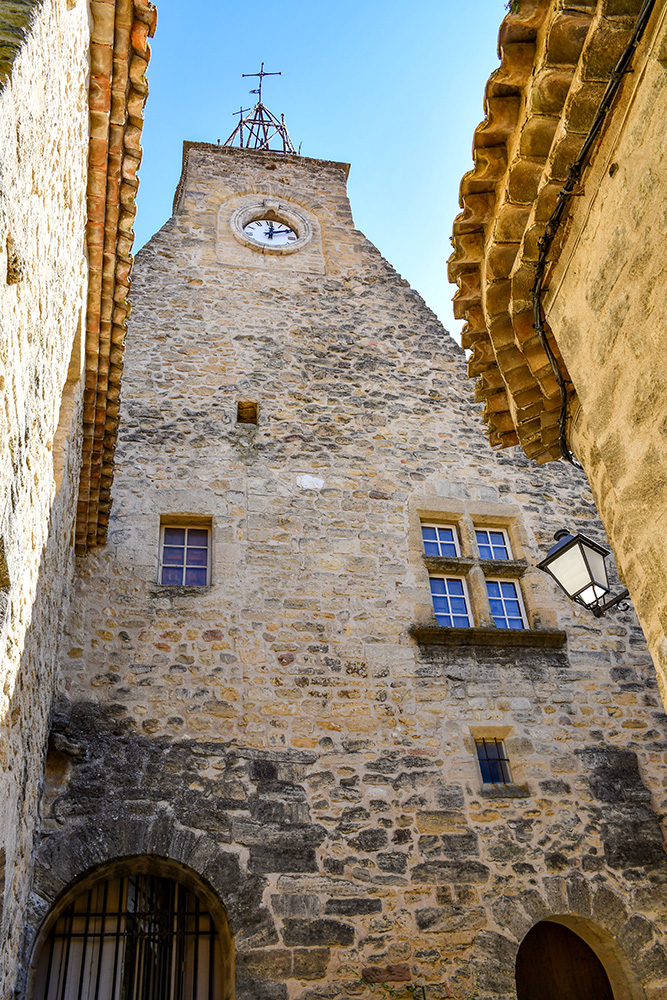
The belfry © French Moments
Rue du Petit Portail
We find ourselves again at the Place du Château that we saw earlier.
Let's descend the Rue du Petit Portail.
As its name suggests, it leads to a small gate.
The Portalet is the only remaining gate of the three that the second medieval enclosure once had.

The Portalet © French Moments
Rue du Rocher and Rue du Buis
Let's continue the visit along the Rue du Rocher.
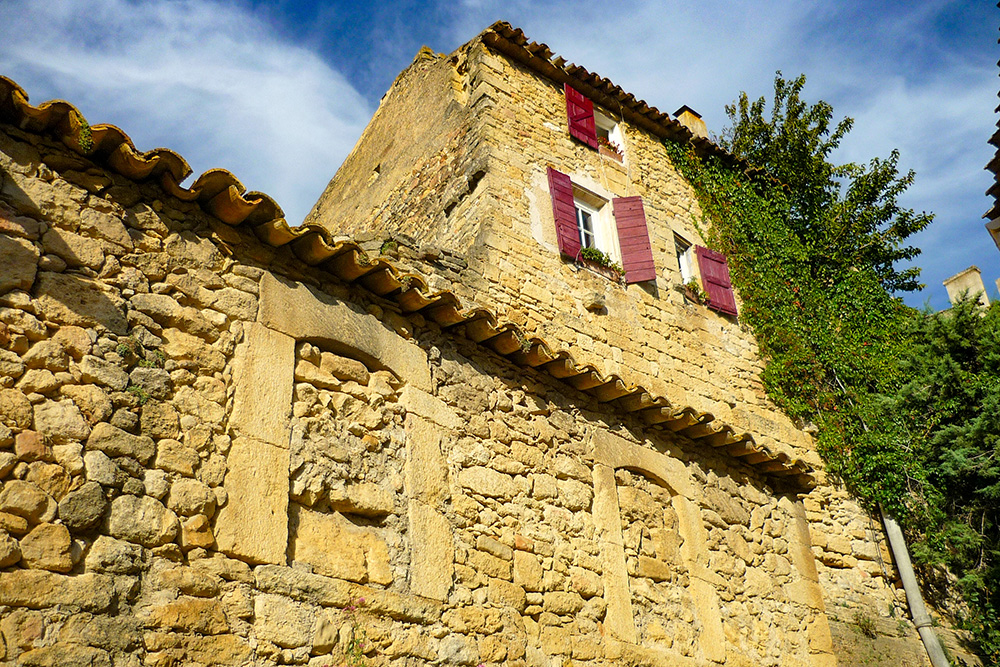
Rue du Rocher © French Moments
We arrive at a charming spot shaded by fig trees.

Under the fig tree © French Moments
Now, let's follow the Rue du Buis, which runs parallel to the Rue du Rocher.
We find ourselves again at the Traverse Esquicho-Couido that we saw earlier from the Rue Basse.

Rue du Buis © French Moments
And after a few metres, we enter the Rue du Petit Portail.
Let's turn right to head towards the exit of the old village.
We have arrived at the Boulevard des Platanes, and after a few more metres of walking, we will reach the car park, our starting point.
I hope you enjoyed this walk through the streets of Ansouis.
In any case, it was a pleasure to introduce you to this lovely village in Provence.
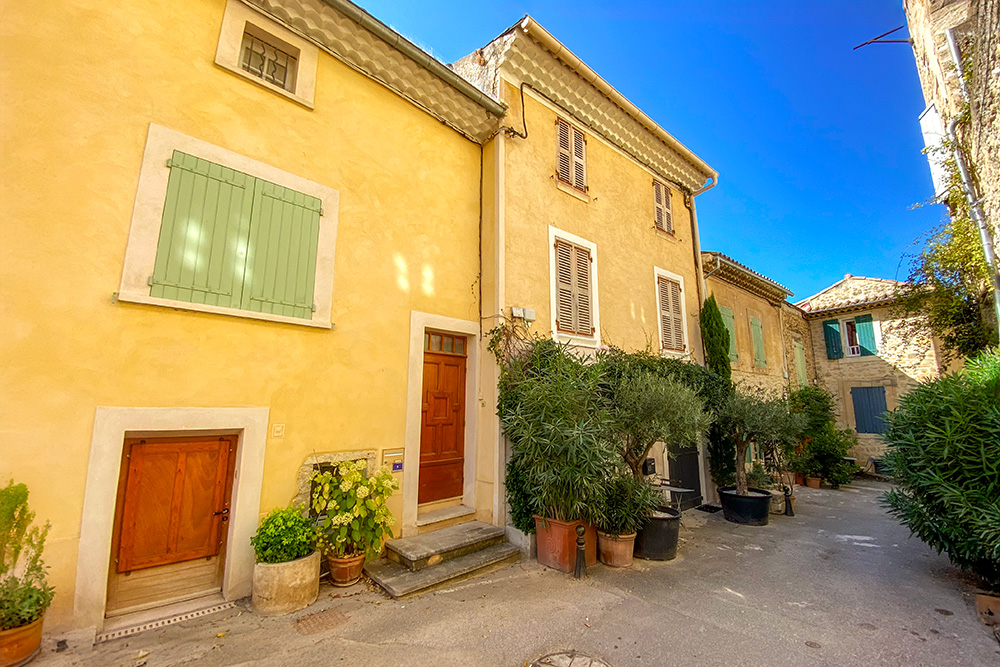
Rue du Rocher © French Moments
Find out more
Here are some pages from our blog and other websites to find out more about this Provencal destination.
- Discover the hilltop villages of the Luberon
- Find out more about Provence-Alpes-Côte d'Azur
- The official tourist office of the area
- Click here to book your accommodation in the Luberon or browse the map below:
What to do in the Luberon
Be inspired by a list of things to do in the Luberon:
Pin Ansouis on Pinterest






